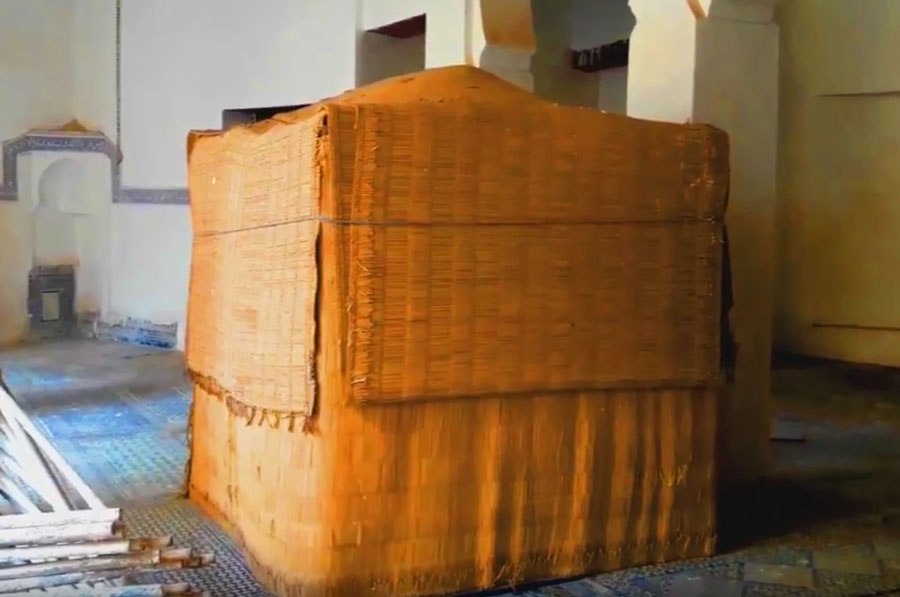
In the spiritual history of Morocco, few families shine as brightly as the al-Kattani lineage—a dynasty of scholars, saints, reformers, and poets whose collective contributions to Islamic civilisation span centuries. This is not merely a family of accomplished individuals; it is a river of divine light flowing through generations, each member adding their unique brilliance to an ever-expanding ocean of knowledge and spiritual wisdom.
The Kattani family traced their noble lineage back to Idris I, the founder of Morocco's first Islamic dynasty and a direct descendant of the Prophet Muhammad (peace and blessings be upon him) through his grandson Hasan ibn Ali. This prophetic ancestry was not just a matter of genealogical pride—it carried a spiritual inheritance, a transmission of divine light that manifested in remarkable ways across the generations.
What makes the Kattani story so compelling is how this family embodied the complete Islamic vision: they were simultaneously masters of traditional scholarship and mystic seekers of divine truth, defenders of the faith against colonial oppression and advocates for progressive reform, teachers of sacred law and poets of spiritual love. In their lives, we see no separation between knowledge and action, between inner purification and outer service, between devotion to God and commitment to justice.

The story begins with Shaykh Muhammad ibn Abd al-Wahid Ibn al-Kabir al-Kattani, born in Fez under circumstances that might have broken a lesser soul. His father passed away several months before his birth, leaving him to be raised in an orphanage. Yet this apparent hardship was, in the wisdom of divine providence, a preparation for greatness.
The Qur'an tells us: "Did He not find you an orphan and give you shelter?" (93:6). Like the Prophet Muhammad (peace and blessings be upon him) himself, who was orphaned and raised under divine care, young Muhammad al-Kabir's early loss became the foundation for extraordinary spiritual attainment. In the absence of an earthly father, he found the Ultimate Father—God Almighty—who shaped him into one of Morocco's most renowned gnostics.
Muhammad al-Kabir studied under numerous scholars and saints, but his primary spiritual guide was the famous Shaykh Muhammad ibn al-Qasim al-Qandusi, a master of profound realisation. Their very first meeting, which took place in the sacred al-Qarawiyyin Mosque in Fez, was marked by an extraordinary event that would define the young seeker's entire spiritual trajectory.
Imam al-Qandusi, recognising the special nature of his new student, brought Shaykh Muhammad al-Kabir into the presence of the Prophet (peace and blessings be upon him) in a wakeful vision—not in sleep, not in imagination, but in direct spiritual communion. This meeting with the Prophetic Reality, while fully conscious, is one of the highest blessings a saint can receive, and it established Muhammad al-Kabir as a vessel for divine light.
This encounter mirrors the experience of Shaykh Ahmad al-Tijani, demonstrating that the door to direct prophetic connection remains open for those whom God has chosen and prepared. The Prophet (peace and blessings be upon him) continues to guide his spiritual inheritors, appearing to the purified hearts of those who have prepared themselves through knowledge, devotion, and complete surrender.
In 1862 (1278 AH), Shaykh Muhammad al-Kabir founded the Kattani Tariqa—a spiritual path that would become a significant force in Moroccan Islamic life. He established a zawiya (spiritual centre) in Fez where he taught hadith (Prophetic traditions), tasawwuf (Islamic spirituality), and other sacred sciences to disciples who came seeking the light he carried.
The Kattani Tariqa was distinctive in its combination of rigorous traditional scholarship with deep mystical experience. Students didn't merely memorise texts; they underwent spiritual transformation. They didn't just learn about the Prophet (peace and blessings be upon him); they cultivated a living connection with his reality.
Shaykh Muhammad al-Kabir was an extraordinarily prolific author, having written over forty books, including Uloom al-Muhammadiyya (The Muhammadan Sciences) and Rihla Fath al-Mubin (The Journey of Clear Victory). These works preserved not only intellectual knowledge but the spiritual insights that flow from direct divine opening.
He passed from this world on 26 Dhul Qadah 1234 AH (1819) and was buried in his zawiya, where his tomb became a place of blessing and spiritual visitation. His departure from the physical realm did not end his influence—like all great saints, his spiritual presence continues to guide those who seek his intercession.
The spiritual mantle passed to Shaykh Muhammad al-Kabir's son, Sidi Abdul Kabir ibn Muhammad al-Kattani, who would become known by the magnificent title "Jabal al-Sunna"—the Mountain of Prophetic Tradition. This title was not a mere honorific; it described the reality of a man who embodied the Prophet's teachings so entirely that he became like an immovable mountain, a reference point of authentic Islam in turbulent times.
Sidi Abdul Kabir was a polymath in the truest sense—a master of hadith, jurisprudence, theology, Arabic linguistics, and Sufi spirituality. But his knowledge was never dry or merely academic. It was living knowledge, illuminated from within by spiritual realisation, practical wisdom that could address both the inner needs of souls and the outer challenges facing the Muslim community.
Under his leadership, the Kattani Tariqa flourished and expanded. He further developed the spiritual methodology his father had established, training a generation of disciples who would carry the light to new territories. The Zawiya in Fez became a beacon of authentic Islamic learning—a place where the outer knowledge of sacred law perfectly complemented the inner knowledge of the mystical path.
Sidi Abdul Kabir attracted followers from all walks of life, but the Kattania order had a special connection with the working poor—those whose daily labour left them little time for extensive study but whose hearts yearned for divine connection. This democratic spiritual vision reflected the Prophetic model: the door to God's love is open to all, regardless of social status or worldly position.
What distinguished Sidi Abdul Kabir was not just his vast learning but his sublime character. In Islamic spirituality, knowledge without character transformation is considered incomplete. The accurate measure of a scholar is not how many books he has memorised but how much of the Prophet's beautiful character he has manifested.
Those who knew Sidi Abdul Kabir spoke of his refined manners, generosity, patience, humility, despite his extensive knowledge, and his deep devotion to worship. He was living proof that the path of sacred knowledge, when walked correctly, leads to the perfection of human character.
He passed away on 26 Rabi' al-Awwal 1333 AH (1915). He was laid to rest next to his father in the zawiya, so that even in their graves, father and son remained connected, their combined light radiating to visitors who came seeking blessing and spiritual benefit.
Into this family of scholars and saints was born Muhammad bin Abd al-Kabir al-Kattani in 1873, a soul destined to write one of the most dramatic and inspiring chapters in Moroccan history. Known by his kunya Abu al-Fayd (Father of Overflowing Grace), he inherited not only his family's scholarship but their courage, their commitment to truth, and their willingness to sacrifice everything for the sake of God's religion.
From his earliest days, Muhammad manifested extraordinary intelligence and spiritual capacity. He memorized the Qur'an in his youth and committed to memory the Hikam (Wisdoms) of Ibn Ata Allah al-Iskandari—those luminous aphorisms that distill the essence of Sufi wisdom into crystalline truths.
His father, the Mountain of Prophetic Tradition, personally guided him through the great works of Islamic mysticism—the writings of al-Tirmidhi, Suhrawardi, and the monumental Meccan Revelations of Muhyiddin Ibn Arabi. His maternal uncle, Ja'far bin Idris al-Kattani, taught him hadith, the biographies of prophets, jurisprudence, and theology. Under Muhammad Abdullah al-Bennani, known as the "Pharaoh of Syntax," he mastered Arabic grammar to such a degree that language became a tool of spiritual expression.
According to the hagiography al-Madhahir, young Muhammad adopted a practice that set him apart: he veiled his face, following the example of the great Moroccan saint Abu Yaaza and, in the Islamic tradition, the Prophet Moses (peace be upon him). This veiling was not due to physical shyness, but to spiritual intensity—when someone's inner light becomes too bright, it can overwhelm those who are not prepared to receive it.
Muhammad's brilliance manifested early. While still a young man, he began teaching, and his words carried such power that he drew crowds wherever he went—from Fez to Rabat to Salé, through Zerhoun, Meknes, and across Morocco's cities. He taught scholars already established in their own right, including Abu Abdullah Muhammad bin Ibrahim al-Fassi of the Shadhili Sufi Order.
But Muhammad al-Kattani was not content to merely transmit the knowledge of the past. He called for ijtihad—independent reasoning and fresh engagement with Islamic sources—and encouraged breaking free from taqlid, the blind adherence to tradition without critical understanding. This was revolutionary in a religious establishment that often confused preservation with stagnation.
The established scholars of Fez felt threatened. Here was a young man, barely out of his twenties, whose spiritual charisma and intellectual power drew people away from their own circles. They labelled him a heretic, spreading rumours about his ideological deviancy and even accusing him of plotting to overthrow the Sultan.
In 1896/1897, Muhammad was summoned to Marrakesh to answer these charges before Sultan Abdelaziz. This could have been the end of his story—such accusations have silenced many reformers. But truth has its own power. After months of meetings and debates with religious scholars, Muhammad was completely exonerated. Not only was he cleared of all charges, but the Sultan, recognising his wisdom and sincerity, made him an adviser.
In 1903, Muhammad al-Kattani ebarked on the Hajj pilgrimage to Mecca. This journey became far more than a fulfillment of religious duty—it was a transformative exposure to the broader Islamic world and the forces threatening it.
In the Great Mosque of Mecca, this young Moroccan scholar taught some of the Hijaz's most respected scholars. He travelled through the Levant and Egypt, meeting with leaders and reformers, including Khedive Abbas Pasha I in Cairo and Sharif Awn ar-Rafiq in Mecca. At Al-Azhar University in Cairo, he taught Egyptian scholars. He held lengthy discussions with Khedive Isma'il Pasha, attempting to coordinate efforts between Egypt, the Ottoman Empire, and Morocco to counter the growing threat of French imperialism.
During this period, numerous scholars from the Eastern Islamic world joined the Kattania Sufi order, recognising in Muhammad al-Kattani's teaching the authentic combination of scholarship and spiritual depth they sought. Among them were Ali ibn Tahir al-Watri, Abd al-Karim Murad, and Khayreddin al-Tunsi.
On his return journey, Muhammad visited Marseille and Naples—European cities at the height of their industrial and economic power. What he saw opened his eyes to a painful reality: while Europe advanced in science, industry, and social organisation, the Muslim world had fallen into stagnation and weakness. This was not because Islam was deficient, but because Muslims had abandoned the spirit of progress and excellence that had once made Islamic civilisation the world's leading light.
When Muhammad returned to Morocco in 1904 or 1905, he was a changed man—not in his faith, which had only deepened, but in his understanding of the urgency of reform. He saw clearly what many refused to see: France was preparing to colonise Morocco, and without radical transformation, the nation would fall under foreign domination.
His reform efforts were both symbolic and practical. After visiting Marseille and witnessing how Moroccan wealth was channelled into French industries through tea imports, he forbade his followers from drinking Moroccan tea and encouraged them to oppose its consumption at gatherings and parties. This was economic resistance—a call to break the chains of colonial dependency even in small, daily matters.
But his vision was far larger. He called for the unification of Morocco's tribes, urging them to put aside their feuds and prepare for jihad—not as aggressive warfare, but as a defensive struggle against colonial invasion. He advocated for constitutional reforms that would limit absolute monarchy and create more just, accountable governance. He understood that political and social reform were not separate from spiritual purification but expressions of the same commitment to Islamic principles.
In a bold move that demonstrated his modern vision, Muhammad al-Kattani launched at-Ta'un (The Plague)—the first national newspaper in Morocco. The very name was provocative: he was diagnosing the colonial presence and those who collaborated with it as a plague on the Muslim body politic.
Through at-Ta'un, he attacked those who had sold their loyalty to foreign powers, criticised Muslims who sought protection from European nations rather than strengthening their own community, and called for authentic Islamic reform rooted in the Qur'an and Prophetic tradition, not in blind imitation of European models.
This was revolutionary journalism—utilising modern media to disseminate traditional Islamic values, blending contemporary methods with timeless truths. Muhammad al-Kattani understood that the forms of Islamic expression must evolve with the times, even as the essence remains unchanged.
In 1908, Muhammad al-Kattani led what became known as the Conditioned Bay'ah (pledging allegiance with conditions)—recognised as the birth of Morocco's constitutional movement. This was a pivotal moment in Moroccan history: the idea that a Sultan's authority was not absolute but conditional upon his fulfillment of Islamic principles and service to the people's welfare.
The bay'ah (pledge of allegiance) had always been a feature of Islamic governance, but Muhammad al-Kattani gave it new meaning for the modern age. He argued that Muslims had the right—indeed, the duty—to hold their leaders accountable, to demand justice, to insist on competent governance that protected the community from external threats.
This was Islam's answer to European political philosophy: not borrowed concepts of democracy or constitutionalism, but authentic Islamic principles of consultation (shura), justice ('adl), and accountability. Muhammad al-Kattani was showing that Islam contained within itself the resources for political renewal.
Throughout his activist life, Muhammad al-Kattani remained a prodigious scholar and author. He composed over 300 works, of which 27 were printed—an extraordinary output covering jurisprudence, theology, hadith, history, and Sufi philosophy.
But perhaps most revealing of his soul were his Sufi philosophical love poems. In these verses, he poured out the longing of a heart consumed by divine love, expressing in the language of mystical poetry what his scholarly works conveyed in the language of systematic thought. These poems reveal that beneath the reformer and activist beat the heart of a lover, one intoxicated with love for God and His Messenger (peace and blessings be upon him).
This integration of roles—scholar, mystic, poet, activist, reformer—shows the Islamic ideal of wholeness. Muhammad al-Kattani was not fragmented into different personas. His activism flowed from his mysticism, his spiritual realisation illuminated his scholarship, and his poetry expressed the divine love that motivated everything else.
By 1908, Sultan Abdelaziz had been deposed and replaced by his brother Abdelhafid. The new Sultan, facing pressure from France and from various internal factions, proved far less sympathetic to Muhammad al-Kattani's reform agenda.
The man who had once been adviser to a Sultan, who had been exonerated of all charges years before, who had dedicated his life to Islam and Morocco's welfare—this man was now accused of treason. The charge was politically motivated, an attempt to silence a voice that had become too powerful, too uncompromising in its critique of both colonial powers and collaborating elites.
On May 4, 1909, at the age of thirty-six, Muhammad bin Abd al-Kabir al-Kattani was flogged to death under orders of Sultan Abdelhafid. His body, which had been a vessel for divine light, was broken by the very authorities he had sought to guide toward righteousness.
But martyrdom does not represent defeat in Islamic spirituality—it means victory. The martyr's soul ascends directly to Paradise, as God Himself testifies: "And never think of those who have been killed in the cause of God as dead. Rather, they are alive with their Lord, receiving provision" (Qur'an 3:169).
Muhammad al-Kattani became ash-Shahid—the Martyr—a title that transformed him from a historical figure into an eternal symbol. His blood sanctified the cause of Islamic reform, authenticated his message, and ensured that his legacy would endure long after those who killed him were forgotten.
Into a family shattered by martyrdom was born Muhammad al-Baqir bin Abi al-Fayd Muhammad bin Abd al-Kabir al-Kattani, in Rabat, carrying the prophetic lineage of the Kattanis through his father, the martyred reformer.
Growing up in the shadow of his father's martyrdom could have led to bitterness or despair. Instead, Muhammad al-Baqir embodied the spiritual principle that divine providence works through all circumstances—even tragedy—to shape souls of extraordinary refinement.
He was described as pious, God-fearing, scrupulous in religious matters, generous, and devoted to worship. His father had died when he was young, but he inherited something more precious than physical presence—he inherited his father's refined character, his love of knowledge, and his commitment to serving God through scholarship.
Muhammad al-Baqir memorised the Noble Qur'an and important classical texts (mutun), then threw himself into intensive study with remarkable focus. He learned from the greatest scholars of his generation in both Rabat and Fez, including:
He travelled extensively throughout Morocco and made multiple journeys to the Hijaz, the Levant, and Egypt, learning from the most distinguished scholars in these regions and collecting chains of transmission (asanid) that connected him to the earliest generations of Islam.
Muhammad al-Baqir specialised in the science of asanid—the chains of transmission that authenticate Islamic knowledge. This might seem like a dry, technical field, but it carries profound spiritual significance. These chains are not merely bureaucratic documentation; they represent the living continuity of Islamic knowledge from teacher to student, from generation to generation, ultimately reaching back to the Prophet (peace and blessings be upon him) himself.
He compiled his chains of transmission in a work called Ghunyah al-Mustafid bi Dhikr Asahh al-Asanid (The Seeker's Sufficiency in Mentioning the Most Authentic Chains). But this was only one of numerous works he authored on history, biography, genealogy, and chains of transmission:
He also compiled a comprehensive list of his father's teachers and wrote his biography, ensuring that the martyred reformer's scholarship would not be lost to history.
The true measure of a scholar's worth comes from the testimony of other scholars—those qualified to evaluate both knowledge and character. The great muhaddith (hadith master) and scholar Sayyidi Abd al-Aziz al-Ghumari said of Muhammad al-Baqir:
"Sayyidi Muhammad Baqir al-Kattani was from the distinguished people of the al-Kattani family, and perhaps he was the seal of the righteous people (khatimah al-salihin) of this noble house. I did not see amongst them the like of him in terms of his uprightness, virtue, concern with himself and the worship of his Lord. This is a matter which I think no one will disagree on."
This is high praise from a scholar known for his rigour and precision. To be called "the seal of the righteous" of such an illustrious family is to be recognised as the culmination of generations of spiritual refinement—the purest distillation of the family's noble qualities.
Unlike his grandfather, the activist-reformer, Muhammad al-Baqir lived a quieter life focused on scholarship, teaching, and personal worship. This was not a lesser calling but a different expression of the same commitment to Islam. Every age needs its activists and its contemplatives, its public voices and its hidden treasures.
Muhammad al-Baqir represented the hidden treasure—a man whose primary concern was not public acclaim or historical impact but private communion with God. His righteousness, his scrupulousness in religious matters, his devotion to worship—these qualities made him a source of spiritual blessing (barakah) for all who knew him.
In Islamic spirituality, such hidden saints often carry greater spiritual power than those in the public eye. Their sincerity is purer, their connection to God less contaminated by concern for reputation, their presence a secret source of mercy for the entire community.
On 16 Sha'ban 1384 AH (1964 CE), Muhammad al-Baqir's soul returned to its Creator. He was buried in Rabat, and though his grave may be less visited than those of his more famous ancestors, it shines with the same divine light—the light of a soul that spent its earthly life in devoted service to God.
His passing marked, as Shaykh Abd al-Aziz al-Ghumari suggested, perhaps the seal of the great righteous ones of the Kattani family. But this does not mean the family's spiritual legacy ended. Rather, it means that Muhammad al-Baqir perfected and completed a particular spiritual quality—the combination of rigorous scholarship with personal righteousness—that had characterised the family for generations.
The Kattani story teaches us that authentic Islamic life integrates seemingly opposite poles: scholarship and mysticism, inner purification and outer activism, preservation of tradition and openness to reform, devotion to God and service to humanity.
Shaykh Muhammad al-Kabir founded a Sufi order while producing rigorous scholarly works. Sidi Abdul Kabir was called the Mountain of Prophetic Tradition while guiding disciples through mystical states. Muhammad the Martyr wrote Sufi love poetry while launching newspapers and constitutional movements. Muhammad al-Baqir combined expertise in hadith chains with personal devotion that moved his peers to tears.
This integration is the Islamic ideal—wholeness, not fragmentation. We are not meant to be scholars who lack spiritual depth, or mystics who ignore social realities, or activists who have no inner life. The Kattani model demonstrates that true Islam brings all these dimensions together in a harmonious synthesis.
The Kattanis demonstrated remarkable courage. Muhammad the Martyr faced false accusations, exile, political persecution, and ultimately death—yet never compromised his principles or softened his message. He knew that truth sometimes demands the highest price, and he paid it willingly.
This courage was not recklessness but spiritual certainty. When you know with absolute conviction that this world is temporary and the next eternal, that God's pleasure is worth any sacrifice, that martyrdom is victory, not defeat—then you can face tyranny without fear.
In our own age, when speaking truth to power often carries social, professional, or even physical costs, the Kattani example reminds us that some things are worth sacrificing for. Convenience is not the highest value; truth is. Comfort is not the ultimate goal; righteousness is.
The Kattani Tariqa's special connection with the working poor reflects Islam's democratic spiritual vision. Divine proximity is not reserved for the scholarly elite or the socially privileged. The door to God's love stands equally open to the merchant and the scholar, the labourer and the prince.
This spiritual democracy is one of Islam's most beautiful teachings, and the Kattanis lived it authentically. Their zawiya was a place where all were welcome, where knowledge was shared freely, and where spiritual guidance was offered to whoever sincerely sought it.
In our age of social fragmentation and class division, this model offers hope: communities built on shared devotion to God rather than shared social status, united by love of the Prophet (peace and blessings be upon him) rather than worldly interests.
Muhammad al-Baqir's dedication to preserving chains of transmission reminds us of something easily forgotten in our age of disembodied information: knowledge has a human dimension. It passes from heart to heart, not just from book to book.
The chains of transmission represent relationships—teacher to student, master to disciple, one generation to the next. They remind us that we stand on the shoulders of giants, that our knowledge is a trust inherited from those who came before, that we have a responsibility to preserve and transmit it to those who will come after.
In a digital age where information is abundant but wisdom is rare, where facts are everywhere but transformative knowledge is scarce, the Kattani emphasis on authentic transmission calls us back to what matters: learning from living teachers who embody what they teach, and joining communities of learning that transform both character and mind.
Perhaps most remarkably, the Kattani story demonstrates how spiritual excellence can be passed down through families across generations. Each generation built upon the foundation laid by the previous one, carrying the light forward while adding its own unique contribution.
This is the true meaning of inheritance—not just passing down wealth or property, but transmitting knowledge, character, and spiritual connection. The greatest legacy parents can leave their children is not material comfort, but a spiritual foundation: a love of God, knowledge of Islam, good character, and a commitment to serving the truth.
The Kattani family proves that such transmission is possible when parents prioritise spiritual education, when knowledge is honoured in the home, when children see their parents embodying Islamic principles, and when family identity is rooted in service to God rather than worldly status.
From Shaykh Muhammad al-Kabir's humble beginnings as an orphan to Muhammad al-Baqir's quiet scholarly devotion, the Kattani family's story spans over a century of Moroccan and Islamic history. Through colonial pressures, political upheavals, personal tragedies, and martyrdom, the light they carried never dimmed.
Today, the Kattani Tariqa continues, though perhaps less prominently than in earlier generations. The zawiya in Fez still stands. The books they authored still teach. The chains of transmission they preserved still connect sincere students to the Prophet (peace and blessings be upon him). The example they set still inspires.
But their legacy lives most truly not in institutions or texts but in the hearts they transformed—the countless students who learned from them, the disciples who followed their path, the reformers they inspired, the scholars who built upon their foundations.
The Kattani story reminds us that one family, committed to God across generations, can change the world. It reminds us that scholarship without spirituality is empty, that spirituality without courage is incomplete, that courage without wisdom is dangerous, and that wisdom without transmission is wasted.
Most of all, it reminds us that the light of Islam—transmitted from the Prophet (peace and blessings be upon him) through authentic spiritual masters, preserved through rigorous scholarship, embodied in beautiful character, and expressed through courageous action—this light can never be extinguished.
Tyrants may kill the bearers of light, as Muhammad the Martyr was killed. Scholars may pass away, as each generation does. But the light itself—the divine light of Islam, the prophetic light of Muhammad (peace and blessings be upon him), the mystical light of those who have known God—this light continues to shine.
The Kattani family carried that light brilliantly for their time. Now the question is: who will carry it in ours?
May God have mercy on the Kattani family—the scholars, the saints, the martyrs, the righteous ones. May He grant them the highest stations in Paradise. May He allow us to benefit from their knowledge, their example, and their spiritual blessings. And may He raise up in every generation those who carry forward the light of authentic Islam with the same courage, the same wisdom, and the same love.
Ameen.
For those drawn to explore the Kattani legacy further, their writings remain available in Arabic, offering a rich well of knowledge and spiritual insight. The zawiya in Fez welcomes sincere visitors. And the spiritual methods they taught continue to be practised by authentic guides in Morocco and beyond.
May this article serve as a reminder that spiritual greatness is always possible, that families can be schools of sainthood, and that commitment to truth—whatever the cost—is the path of those whom God loves.
This is the spirit we seek to cultivate at Nur Healing: integration of knowledge and practice, honouring of authentic transmission, courage to stand for truth, and above all, love for God and His Messenger that transforms everything it touches.

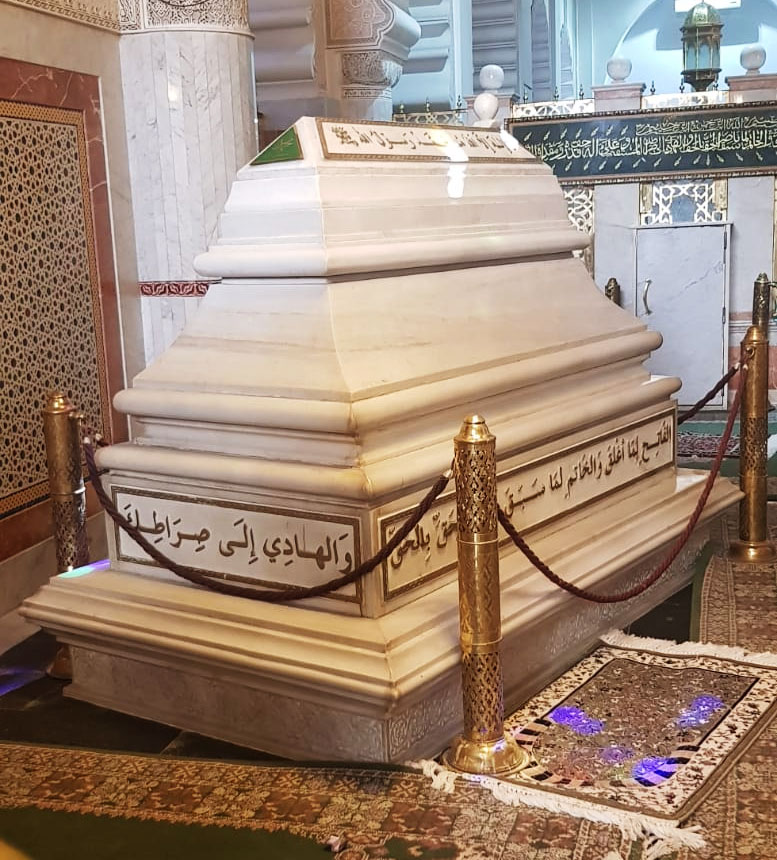

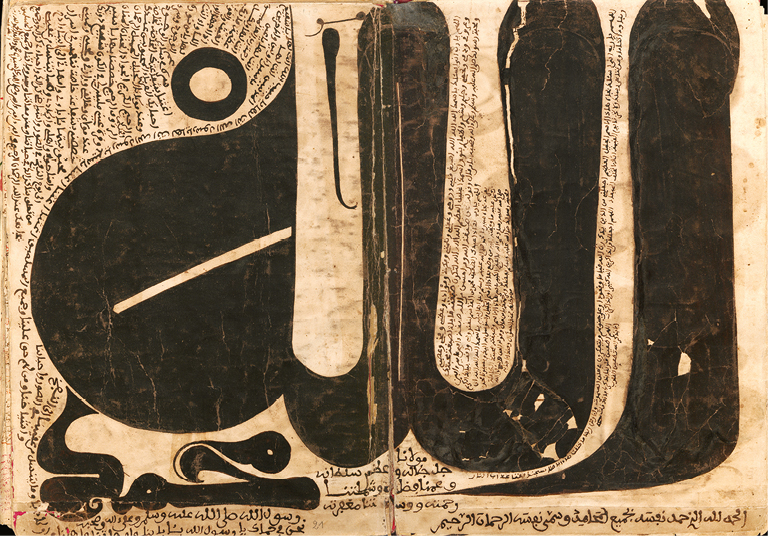
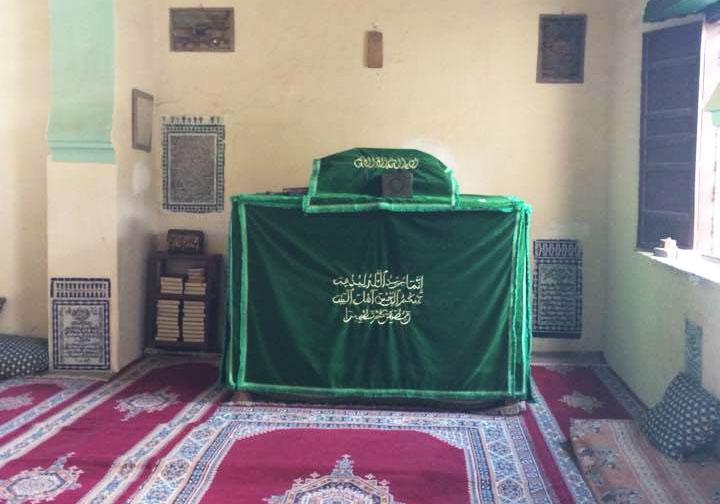


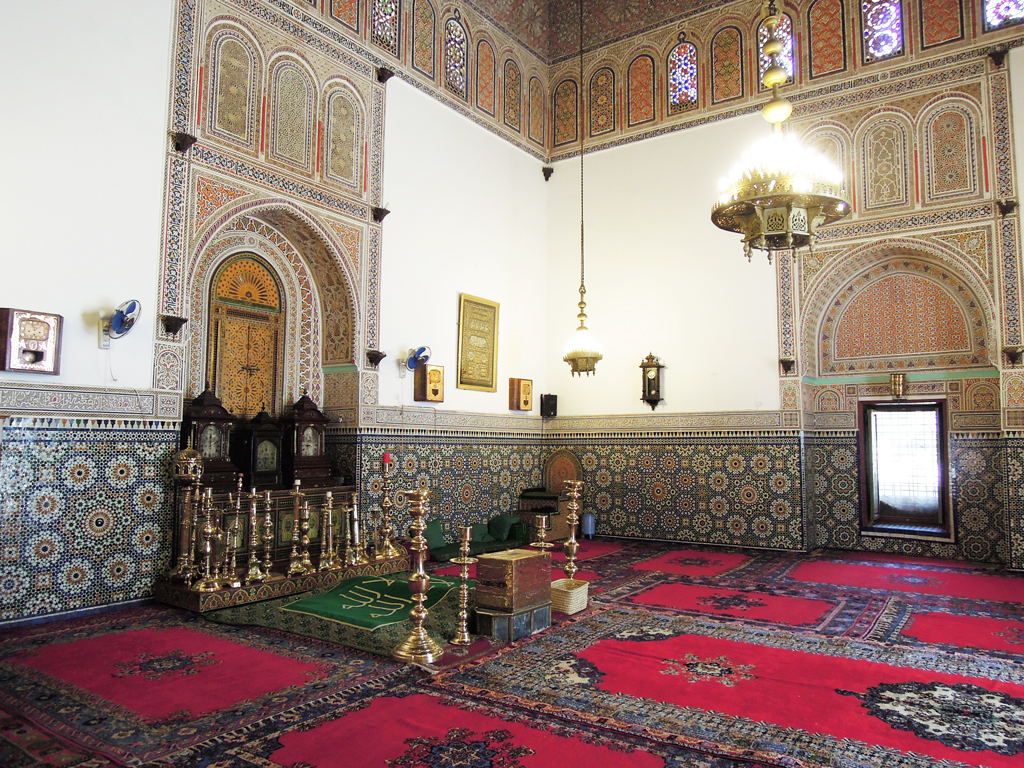





























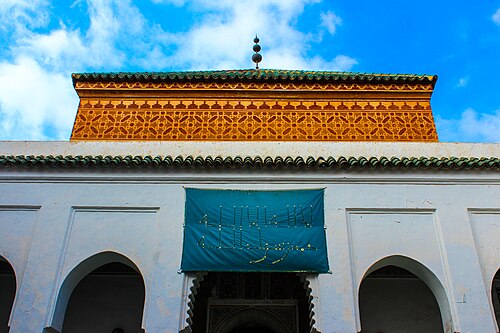





Find all our meditations on the Nur App!
Experience tranquillity through Qur'anic recitations and meditations on our Nur App and develop healthy spiritual routines to maintain your God-given Nur (light).
